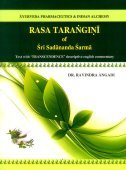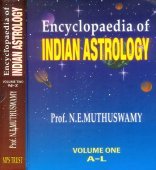Stream: 2 definitions
Introduction:
Stream means something in Hinduism, Sanskrit. If you want to know the exact meaning, history, etymology or English translation of this term then check out the descriptions on this page. Add your comment or reference to a book if you want to contribute to this summary article.
Images (photo gallery)
In Hinduism
Shilpashastra (iconography)
Source: Shodhganga: Elements of Art and Architecture in the Trtiyakhanda of the Visnudharmottarapurana (shilpa)Streams should adorn Mountains in a painting, following the guidelines of ancient Indian Painting (citra), according to the Viṣṇudharmottarapurāṇa, an ancient Sanskrit text which (being encyclopedic in nature) deals with a variety of cultural topics such as arts, architecture, music, grammar and astronomy.—The Viṣṇudharmottarapurāṇa bears an elaborate description on the process of making the picture of some natural objects and phenomenon. According to the Viṣṇudharmottarapurāṇa, the picture of mountain should be adorned with plenty of rocks, peaks, metals, trees, streams and snakes. [...]. Thus, the Viṣṇudharmottarapurāṇa addresses various elements of nature, such as mountain streams, since painting has much connection with time, mood and activity.

Shilpashastra (शिल्पशास्त्र, śilpaśāstra) represents the ancient Indian science (shastra) of creative arts (shilpa) such as sculpture, iconography and painting. Closely related to Vastushastra (architecture), they often share the same literature.
Yoga (school of philosophy)
Source: ORA: Amanaska (king of all yogas): A Critical Edition and Annotated Translation by Jason BirchStreams (of water) are denoted by the Sanskrit term Dhārā, according to the Haṭhapradīpikā of Svātmārāma: an influential 15th-century Sanskrit manual on Hatha-Yoga dealing with techniques to channel one’s vital energy.—Accordingly, while discussing methods for conquering the mind: “Acquiring spiritual knowledge, associating with the wise, abandoning habitual tendencies and stopping the movement of the breath; according to tradition, [all] these methods are effective in conquering the mind. The [mind] is quickly overcome by these [methods of restraint] like the dust of the earth by streams [of water] (dhārā)”.

Yoga is originally considered a branch of Hindu philosophy (astika), but both ancient and modern Yoga combine the physical, mental and spiritual. Yoga teaches various physical techniques also known as āsanas (postures), used for various purposes (eg., meditation, contemplation, relaxation).
See also (Relevant definitions)
Starts with: Stream barringtonia, Stream Entry, Stream orchid, Stream Winner, Streambank wheatgrass, Streams Of Merit, Streamside bluebells, Streamside wild rye.
Ends with: Subconscious Stream.
Full-text (+3141): Ogha, Pravaha, Dhara, Raya, Jalambala, Srotas, Samsriti, Parishyanda, Sota, Calakandi, Udapyam, Nirjhara, Sotapatti, Upanadi, Nisrava, Samsravina, Asripata, Samavatara, Sudhadhara, Vahala.
Relevant text
Search found 356 books and stories containing Stream; (plurals include: Streams). You can also click to the full overview containing English textual excerpts. Below are direct links for the most relevant articles:
Rivers in Ancient India (study) (by Archana Sarma)
5. The river Sindhu in the Atharva-vedasaṃhitā < [Chapter 2 - The Rivers in the Saṃhitā Literature]
9. The river Chenāb or Asiknī and its present status < [Chapter 6 - Changing trends of the Rivers from Vedic to Purāṇic Age]
4. The river Sindhu in the Ṛgveda-saṃhitā < [Chapter 2 - The Rivers in the Saṃhitā Literature]
The Markandeya Purana (by Frederick Eden Pargiter)
Canto LVI - The Descent of the Ganges
Canto XLVII - The Creation from Prakṛti and the Vikāras
Canto LXXXVIII - The Devī-Māhātmya: The slaying of Raktavīja
Garga Samhita (English) (by Danavir Goswami)
Verse 1.9.2 < [Chapter 9 - Description of Vasudeva’s Wedding]
Verse 5.18.21 < [Chapter 18 - Uddhava Hears the Gopīs’ Words and Returns to Mathurā]
Verse 1.4.24 < [Chapter 4 - Description of Questions About the Lord’s Appearance]
Dhammapada (Illustrated) (by Ven. Weagoda Sarada Maha Thero)
Verse 347 - The Story of Theri Khemā < [Chapter 24 - Taṇhā Vagga (Craving)]
Verse 338-343 - The Young Sow < [Chapter 24 - Taṇhā Vagga (Craving)]
Verse 303 - The Story of Citta the Householder < [Chapter 21 - Pakiṇṇaka Vagga (Miscellaneous)]
Ramayana of Valmiki (by Hari Prasad Shastri)
Chapter 43 - Lord Shiva lets loose the sacred river < [Book 1 - Bala-kanda]
Chapter 31 - Ravana goes to the Banks of the Narmada River < [Book 7 - Uttara-kanda]
Chapter 71 - Prince Bharata sees Ayodhya filled with unhappy people < [Book 2 - Ayodhya-kanda]
The Padma Purana (by N.A. Deshpande)
Chapter 101 - Kapiñjala’s Narration < [Section 2 - Bhūmi-khaṇḍa (section on the earth)]
Chapter 137 - Vikīrṇatīrtha and Śvetodbhava < [Section 6 - Uttara-Khaṇḍa (Concluding Section)]
Chapter 140 - Hiraṇyāsaṅgama-tīrtha < [Section 6 - Uttara-Khaṇḍa (Concluding Section)]
Related products










